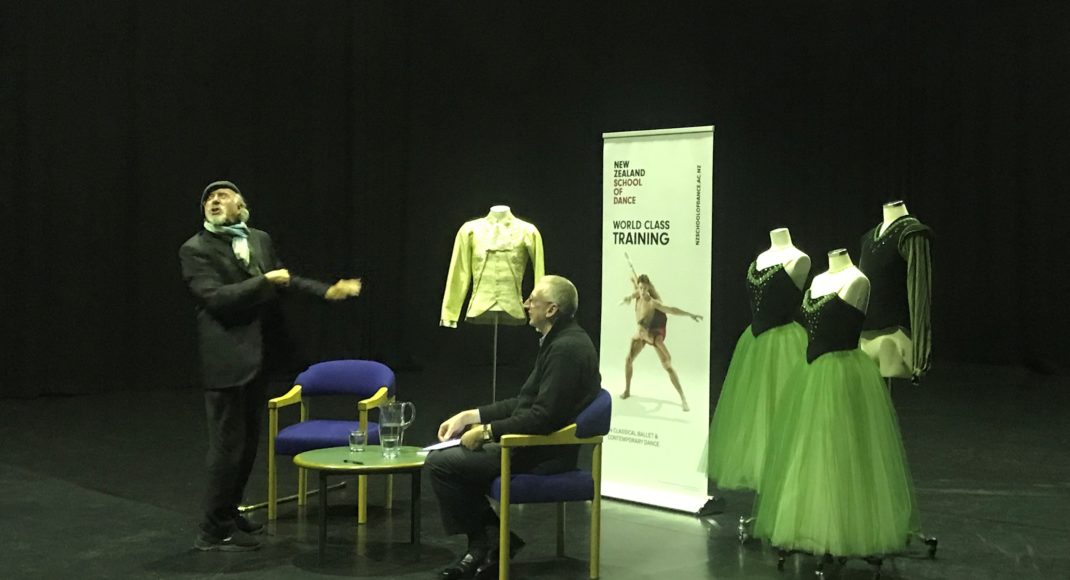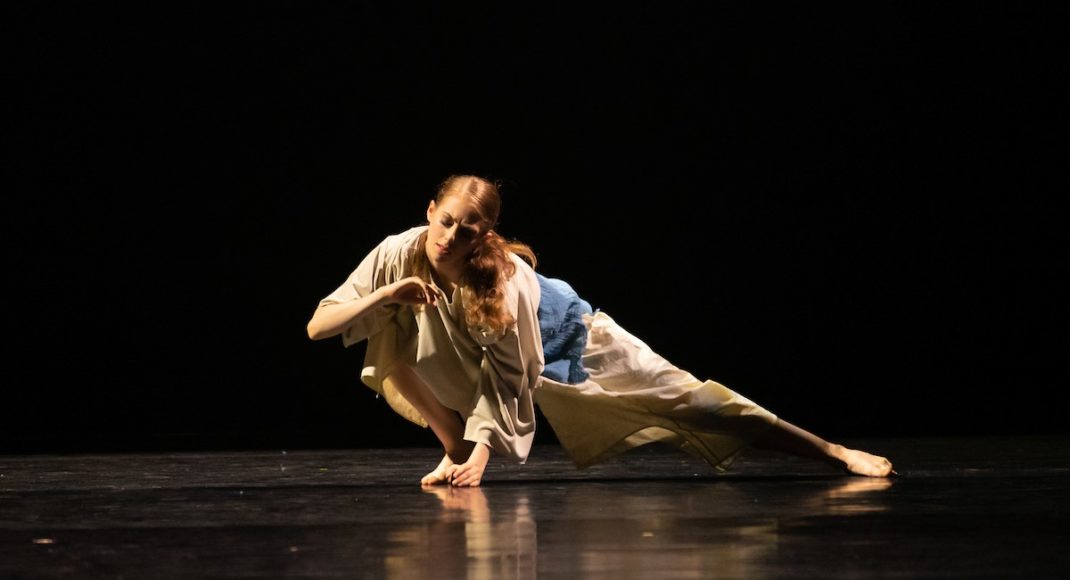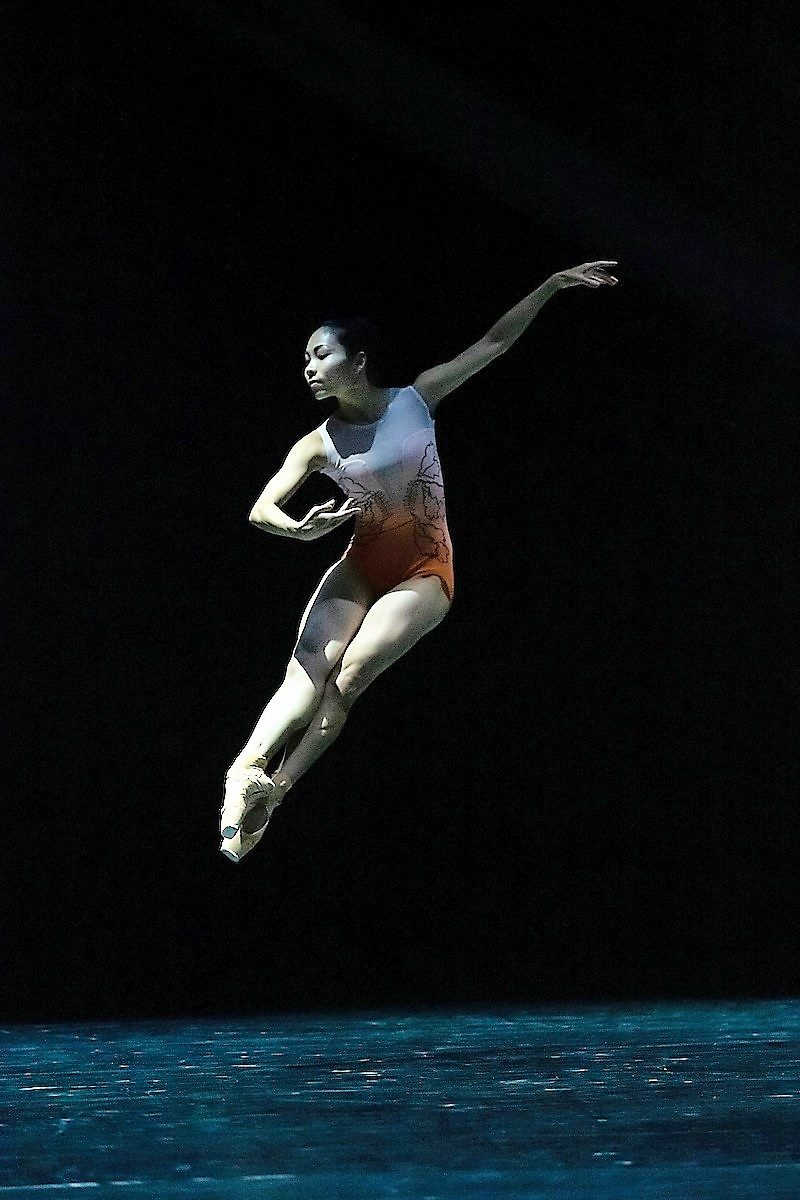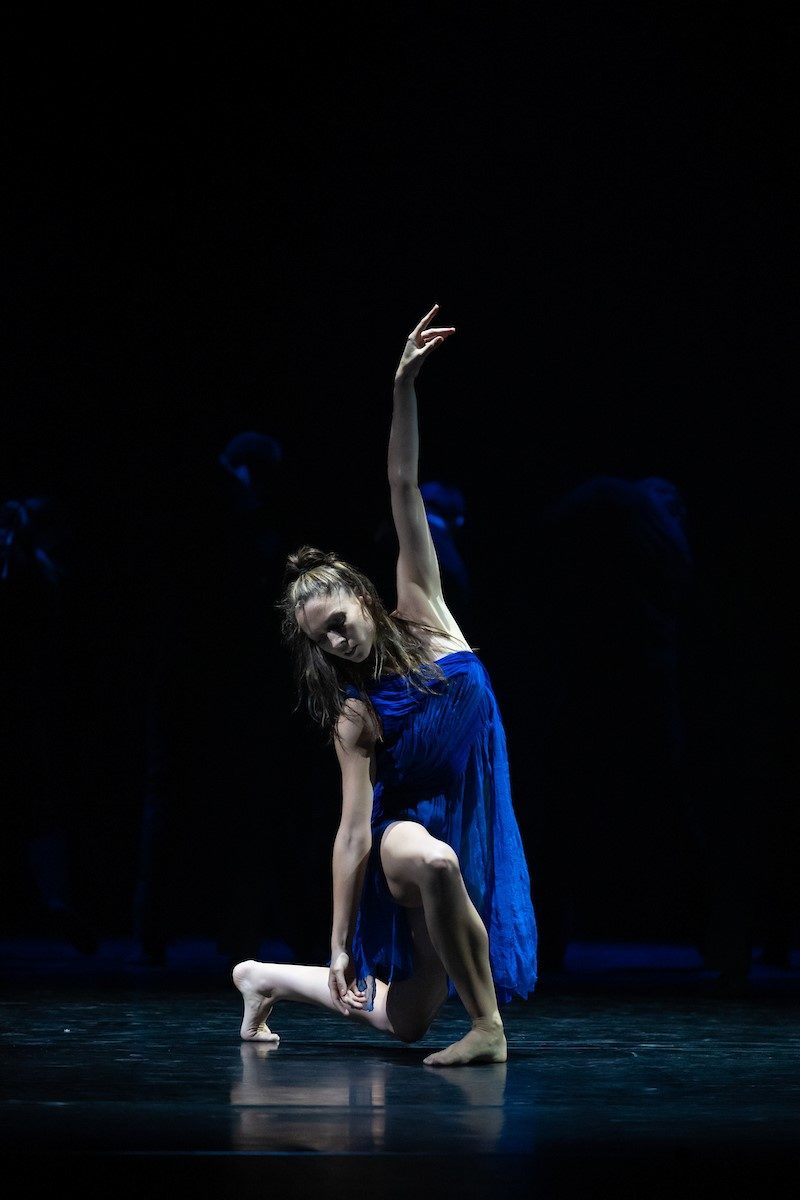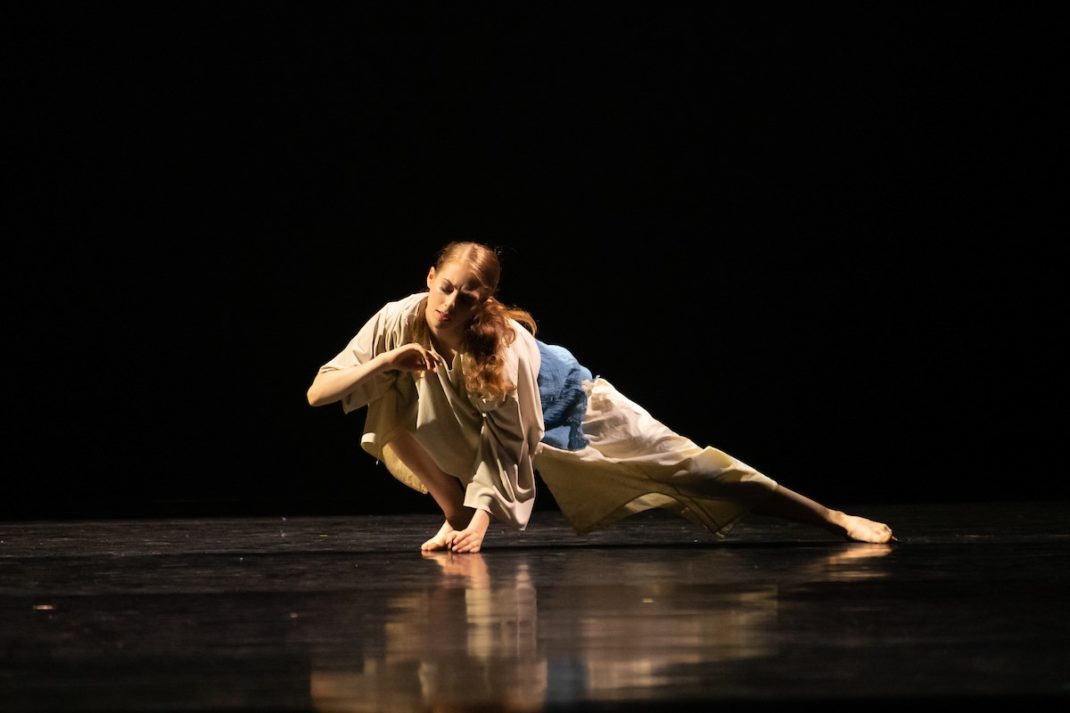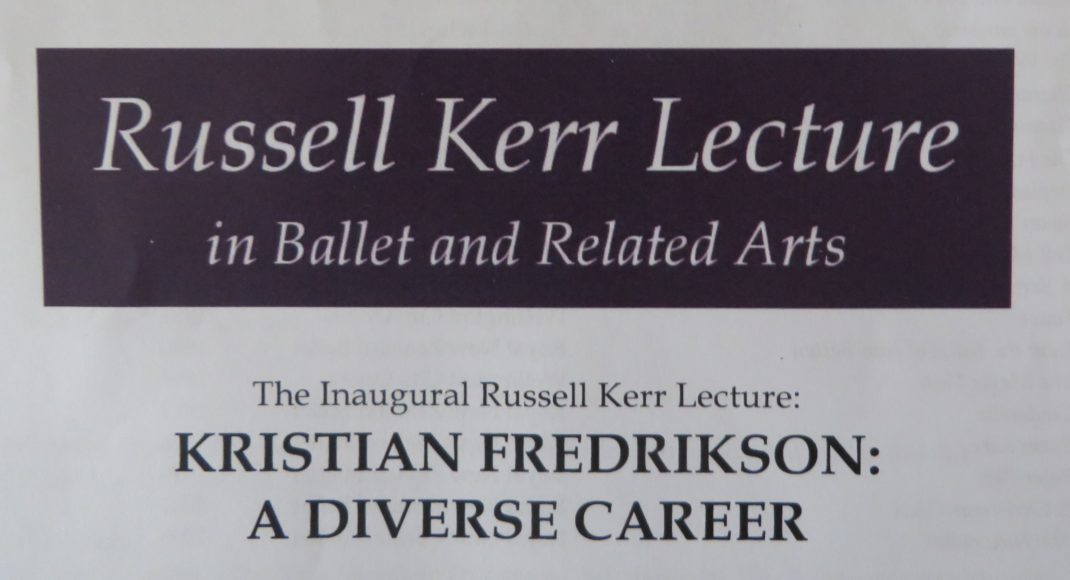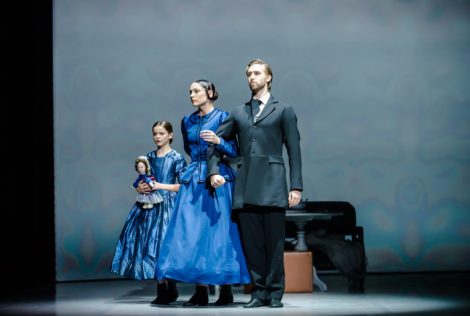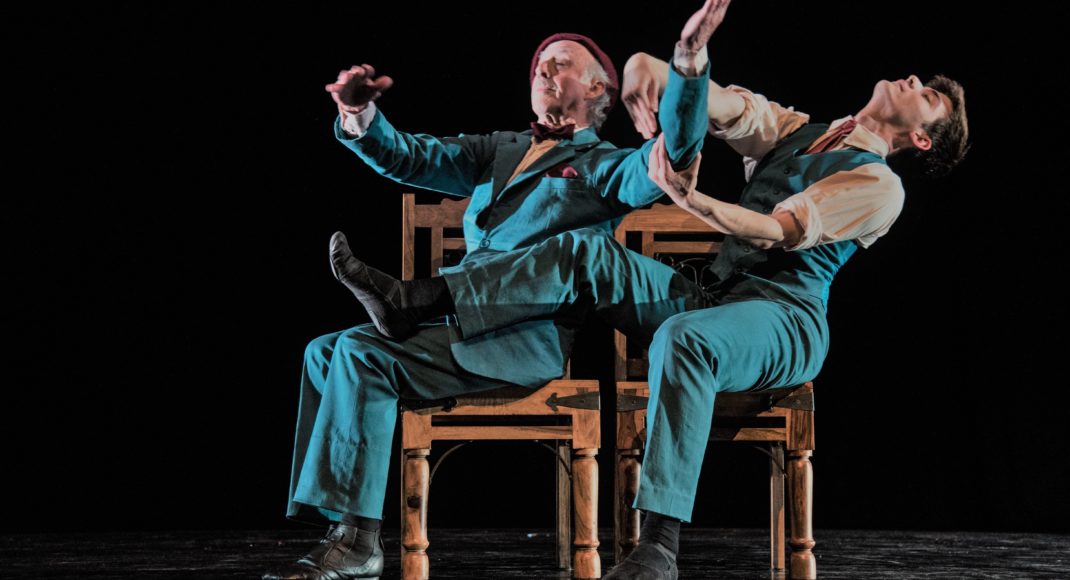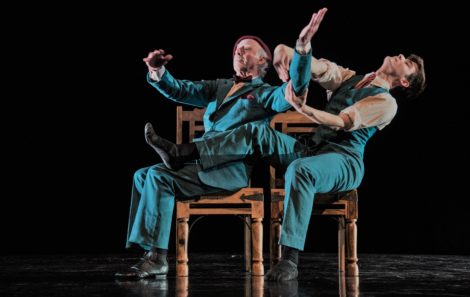by Jennifer Shennan
9 July 2019. New Zealand School of Dance
An armchair conversation with Sir Jon Trimmer was the brainchild of Garry Trinder, Director of New Zealand School of Dance. It was held in the theatre at Te Whaea, mid-week of the school’s winter intensive national seminar, so that many young students, parents and teachers could attend. It was also open to the public and a large contingent of Friends and friends, colleagues, admirers, teachers and audience-goers took the chance to express publicly their appreciation of, and thanks for, this dancer’s phenomenal career. It was twilight hour, so a poignant echo that, on innumerable performance nights across the past six decades, warm-up, make-up, dress-up, curtain-up would have been taking place at around the same time. In reviving the memories and pleasures of those performances, the conversation summoned many ghosts, all of them good. No bad ghosts arrived. Love was in the air.
The names of the main players in his early story include: Jonty’s parents and siblings who danced and sang their way around the family home; Pamela Lowe, his older sister whose dance school in Petone he attended; Poul Gnatt who arrived in 1953 like a lightning bolt from afar and established a ballet company on zero resources yet with the highest of aspirations; Russell Kerr, a quiet genius of ballet, music and theatre arts who succeeded him as Artistic Director of the company in 1962, contributing to its growing international recognition; Alexander Grant, our legendary character dancer expatriate; Peggy van Praagh who offered support during the early years of her directorate of The Australian Ballet—including an enterprising initiative whereby several dancers had three-month exchange residencies between the two companies. Jacqui and Jon Trimmer were later invited to dance with The Australian Ballet on an international tour with guest artists Margot Fonteyn and Rudolf Nureyev, and entertaining tales were told of those times.
Harry Haythorne, a subsequent director of New Zealand Ballet, was another Australasian success story. He and Jonty were obviously great mates (‘We both knew all the hit songs and numbers from vaudeville and music-hall era—had a ball outdoing each other’). There’s no better illustration of that rapport than their twin roles in A Servant of Two Masters, Gray Veredon’s classic commission with inspired design by Kristian Fredrikson. The Film Archive’s copy of that commedia dell’ arte ballet is still worth viewing for the dazzling line-up of its stellar cast—Trimmer and Haythorne, Kerry-Anne Gilberd, Cathy Goss, Karin Wakefield, Lee Patrice, Eric Languet, Warren Douglas, Kilian O’Callaghan. The earlier romp, The Ragtime Dance Company to Scott Joplin, was another of Veredon’s and Fredrikson’s hits. Bernard Hourseau’s Carmina Burana and Ashley Killar’s choreographies No Exit and Dark Waves also gave Jon some of his strongest roles. Many of the heritage works of the Company’s repertoire exist only in memory, but are no less real for that, and a number of them could do with re-visiting.
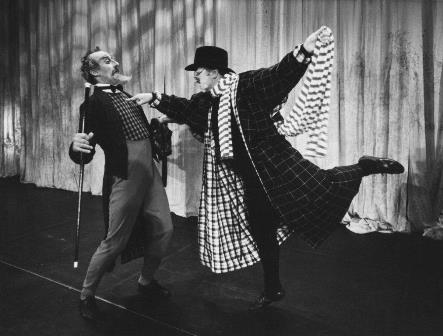
Christopher Hampson’s Romeo & Juliet, and Cinderella, Stanton Welch’s Madame Butterfly, Liam Scarlett’s Midsummer Night’s Dream are further impeccable works that secured RNZB’s reputation for full-length choreographies, combining all the power that dancing, music and design can offer. If asked to name one indelible image of Jon Trimmer on stage, I’d probably first lodge a conscientious objection—What, only one?’ but then describe his power as the Duke of Verona in R&J. He strode in, on a high, elevated back platform, glared down first at the Montagues, then at the Capulets—at everyone stunned by the horror of what had played out, then again at both houses —turned and strode off. His demand that warring end and a truce be declared, delivered in so few gestures, carried all the power of Shakespeare’s tragedy. The timing and the minimalism of those few moments on stage, said it all.
We should tell our grandchildren what we saw. Find the music, tell them the story, show them photos, keep the dress-ups box at hand, take them to a matinee, suggest they draw and write afterwards what they saw, maybe send a postcard to their favourite dancer. Who knows where it might lead, but it can only be a good place.
The clearly important international parts of Jon’s career, with Sadler’s Wells Ballet, and Royal Danish Ballet, were referenced, (‘It certainly helped in Denmark to have Poul Gnatt’s mantle on my shoulders. He was still vividly remembered by everyone there—and clearly had been one of their top dancers’) but it is overwhelmingly apparent that the Trimmers’ commitment and loyalty to the Royal New Zealand Ballet has shaped their lives, and that of so many younger dancers and colleagues here whose artistry they have helped to develop. For that we say Thank You.
Garry asked: ‘When did it first occur to you that the recreation and pleasure you took in dancing as a boy could become your life work, your career?’ Jon replied: ‘Well, you know I’m not sure I can say. I just kept on doing what I loved.’
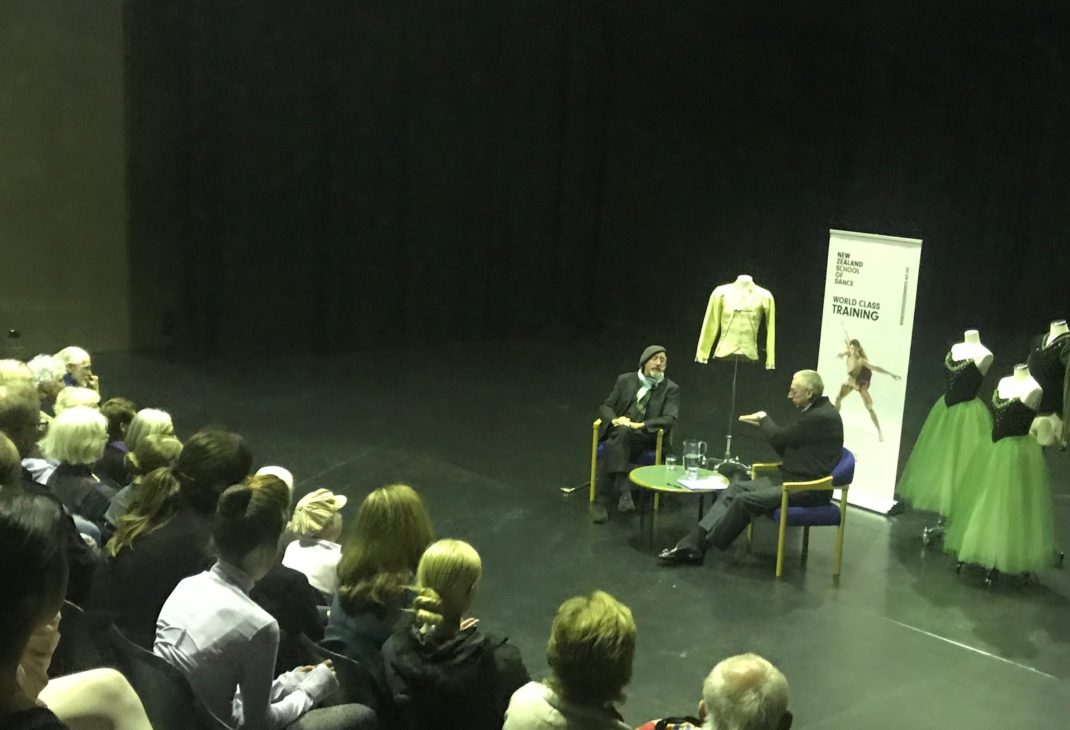
‘What he loved’ included Poul’s pedigree productions of Bournonville ballets—La Sylphide and Napoli; the talisman Prismatic Variations, Russell’s Prince Igor, Petrouchka, Swan Lake, Giselle, Coppélia, Christmas Carol, Peter Pan; interesting new work with Russell Kerr in an interlude at Auckland Dance Centre; plus 100 more… Servant, Ragtime Dance Company, La Fille mal Gardée, Cinderella, Romeo & Juliet … who’s counting and where do we stop? Clearly this is significant repertoire that earned the Company an international recognition and reputation, as well as its royal charter.
The sagas of company politics, funding and management highs and lows over the years were referred to in the briefest of terms, as also the devastating challenge of the fire that destroyed almost all the company’s resources in 1967. The abiding impression one gains is of the resilience and determination to somehow hold on to the reins—with Poul Gnatt, Beatrice Ashton, Richard Campion, Russell Kerr and the Trimmers as the heroes in those early battles.
Young dancers listening will have taken on board Jon’s words about the importance of breathing while moving—to shape and sustain an arabesque, to support a jump, to control a pirouette … ‘oh and the music of course, that helps enormously.’
Another tip, this one he had from Russell Kerr—’Go and sit outside a café, watch people as they walk by. Study their gait, their timing, how they hold their body. That will tell you much about their character which you can then put into your performance, make it lifelike.’
Jon: ‘I stopped dancing princes at a certain age but went on to old men, old women and witches. Look, it’s been just wonderful to work with all those talented people.’ Jon, one could guess it’s been just as wonderful for them, as it has been for us too.
A friend in the audience commented later—’One thing that struck me was his presence when speaking. When Trinder was talking Jonty seemed like just a genial old man, but as soon as he started to speak you couldn’t take your eyes, or attention, away from him.’ That magnetic presence and practice of paying attention has also worked in the opposite direction and been a way of life for Jon for years. He has watched countless RNZB rehearsals and performances with the most attentive eye, and always found a way of gently encouraging younger dancers, suggesting a tip to a colleague as to how the smallest shift in physics of limbs or expression of eyes or face might enhance their performance. Such generosity in the competitive world of ballet arts is rare, but makes the man worth his weight in gold.
There are more stories to be found in Jon’s recently published memoir, Why Dance?and details of the Company productions are listed in the three published histories of the RNZBallet—at 25, 50 and at 60 years.
Jon has also explored pottery and painting as further means of expression. He is a legendary gardener —and, one senses, a deeply happy man Of course he’s not stupid and wants a much better world for dancers, but the knowledge that he has used his own given talents to the maximum has allowed him to remain positive throughout a career that has seen some tortured ups and downs of politics and make-overs during the decades (every ballet company knows them). His humour is quick but never biting, always gentle with wry amusement, a rich sense of irony, patience in waiting for time to resolve troubles of the political variety, and truckloads of performance memories.
Also apparent is a deep and genuine love of his country—’Oh it was wonderful to travel through the whole countryside as we toured everywhere in the early days—we saw so much, and made so many wonderful friends as billets. We’re still friends.’
Bill Sheat, a pillar in many areas of the arts community in New Zealand, says: ‘During my long term as Chairman of the Board of RNZB I was lucky enough to see Jon T. perform countless times. Whenever he made his first appearance there would be a wave of whispered delight as the audience recognised him. It was a mixture of love, ownership and appreciation.’
Tuesday evening was a sweetheart affair—no notes, no microphones, no bullshit, no self-aggrandisement, no lecturing, no breathless promotions, no shouting and whistling, just an ocean of smiling faces and sustained, warm applause that is echoing yet, and holding history. There is no future without the past.
So what did Jonty do? He joined in the applause of course.
Jennifer Shennan, 12 July 2019
Featured image: Sir Jon Trimmer (left) makes a point during his conversation with Garry Trinder. New Zealand School of Dance, Wellington, 2019
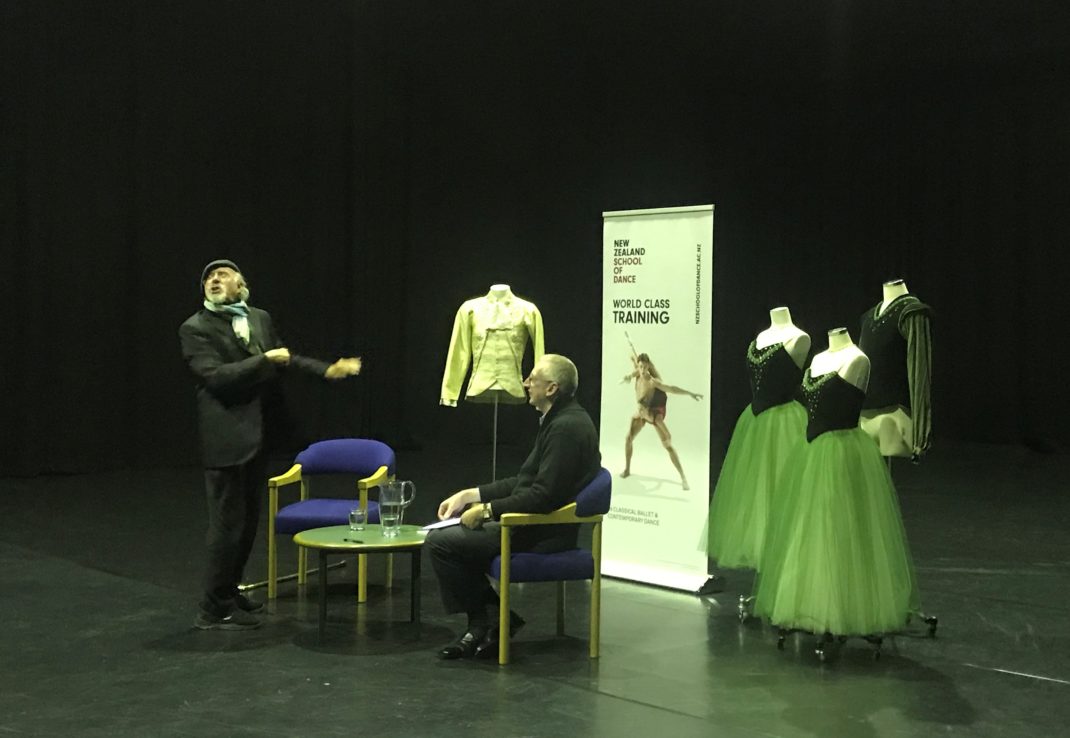
Please consider supporting the Australian Cultural Fund project to raise money to have hi-res images made for a book on the career of designer Kristian Fredrikson, which is heading towards publication. See the project, which closes on 30 July 2019, at this link. [Update 1 August 2019: Project closed]
